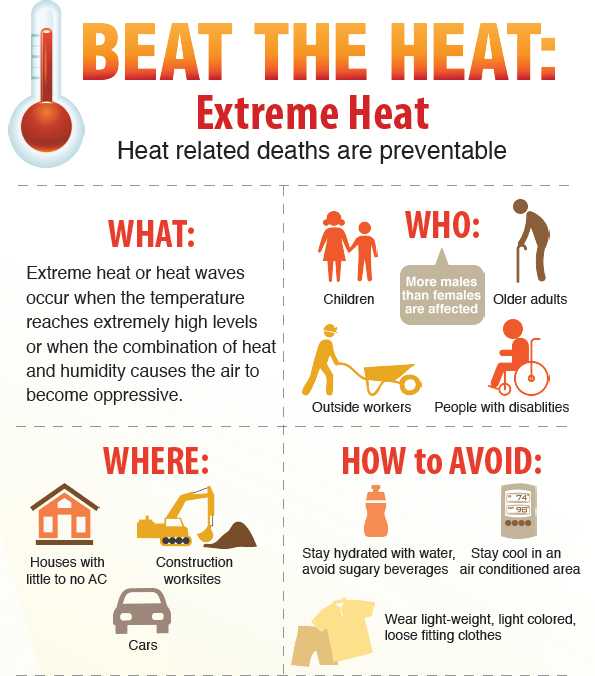About Extreme Heat
What is Extreme Heat?
Extreme heat is defined as summertime temperatures that are much hotter and/or humid than average. Because some places are hotter than others, this depends on what’s considered average for a particular location at that time of year. Humid and muggy conditions can make it seem hotter than it really is.
What Causes Heat-Related Illness?
Heat-related illnesses, like heat exhaustion or heat stroke, happen when the body is not able to properly cool itself. While the body normally cools itself by sweating, during extreme heat, this might not be enough. In these cases, a person’s body temperature rises faster than it can cool itself down. This can cause damage to the brain and other vital organs.
Some factors that might increase your risk of developing a heat-related illness include:
- High levels of humidity
- Obesity
- Fever
- Dehydration
- Prescription drug use
- Heart disease
- Mental illness
- Poor circulation
- Sunburn
- Alcohol use
Who is Most at Risk?
Older adults, the very young, and people with mental illness and chronic diseases are at highest risk. However, even young and healthy people can be affected if they participate in strenuous physical activities during hot weather.
Summertime activity, whether on the playing field or the construction site, must be balanced with actions that help the body cool itself to prevent heat-related illness. Use this website to learn more on how to stay safe in the heat this summer, including how to prevent, recognize, and cope with heat-related illness.
View a full-sized image of the Extreme Heat Infographic. Share it on social media or print it out to post in your office, school, or home.
- Page last reviewed: June 19, 2017
- Page last updated: June 19, 2017
- Content source:


 ShareCompartir
ShareCompartir



